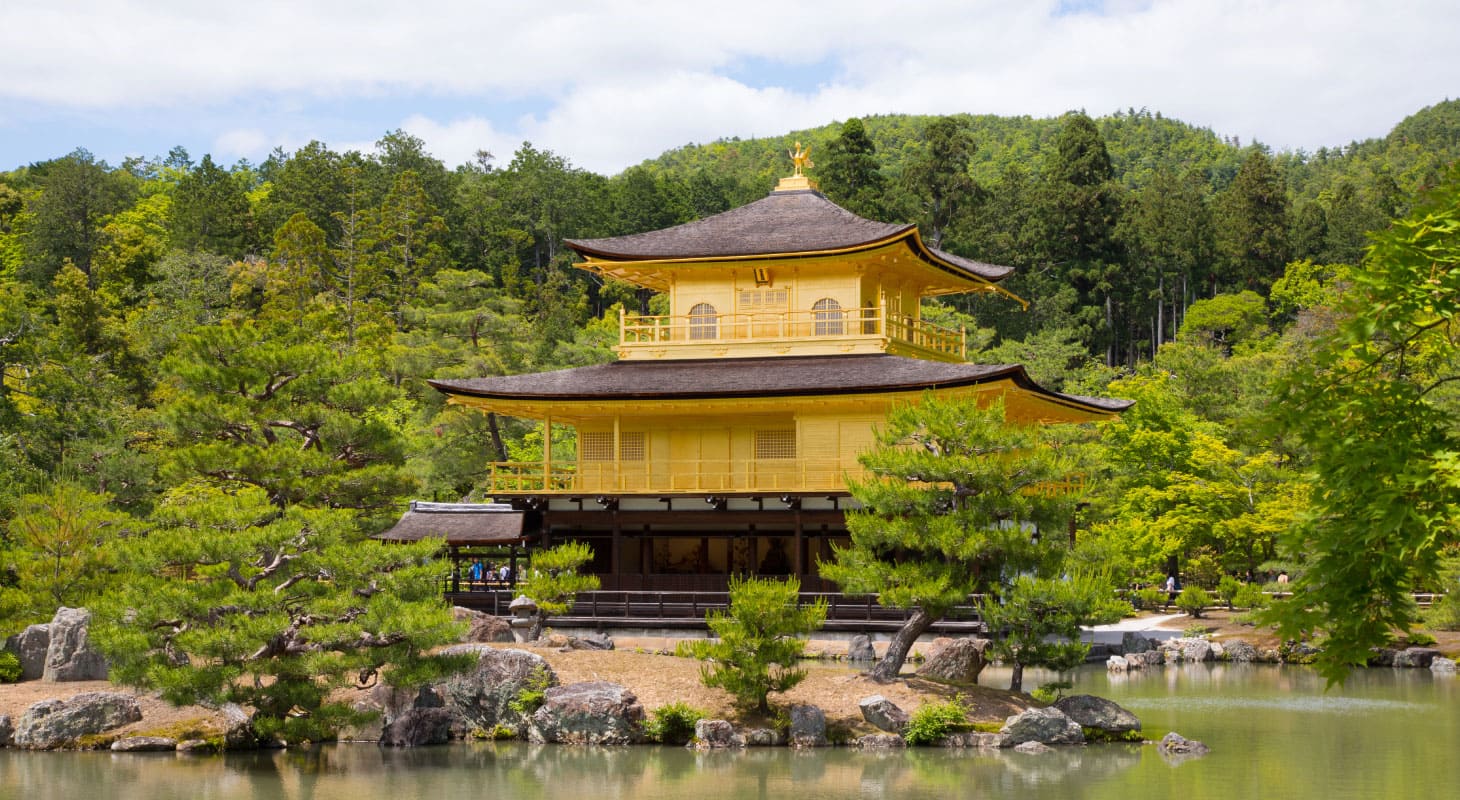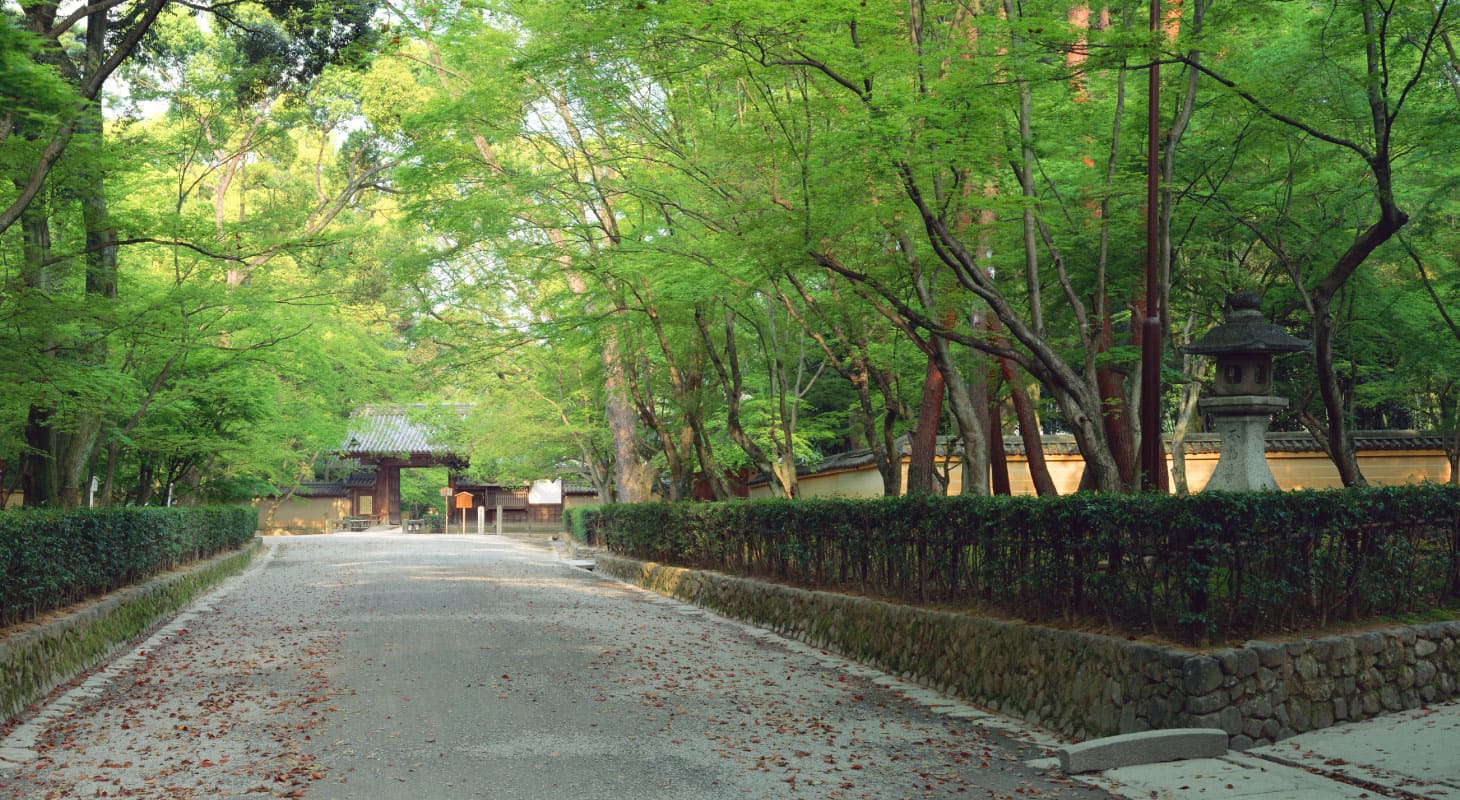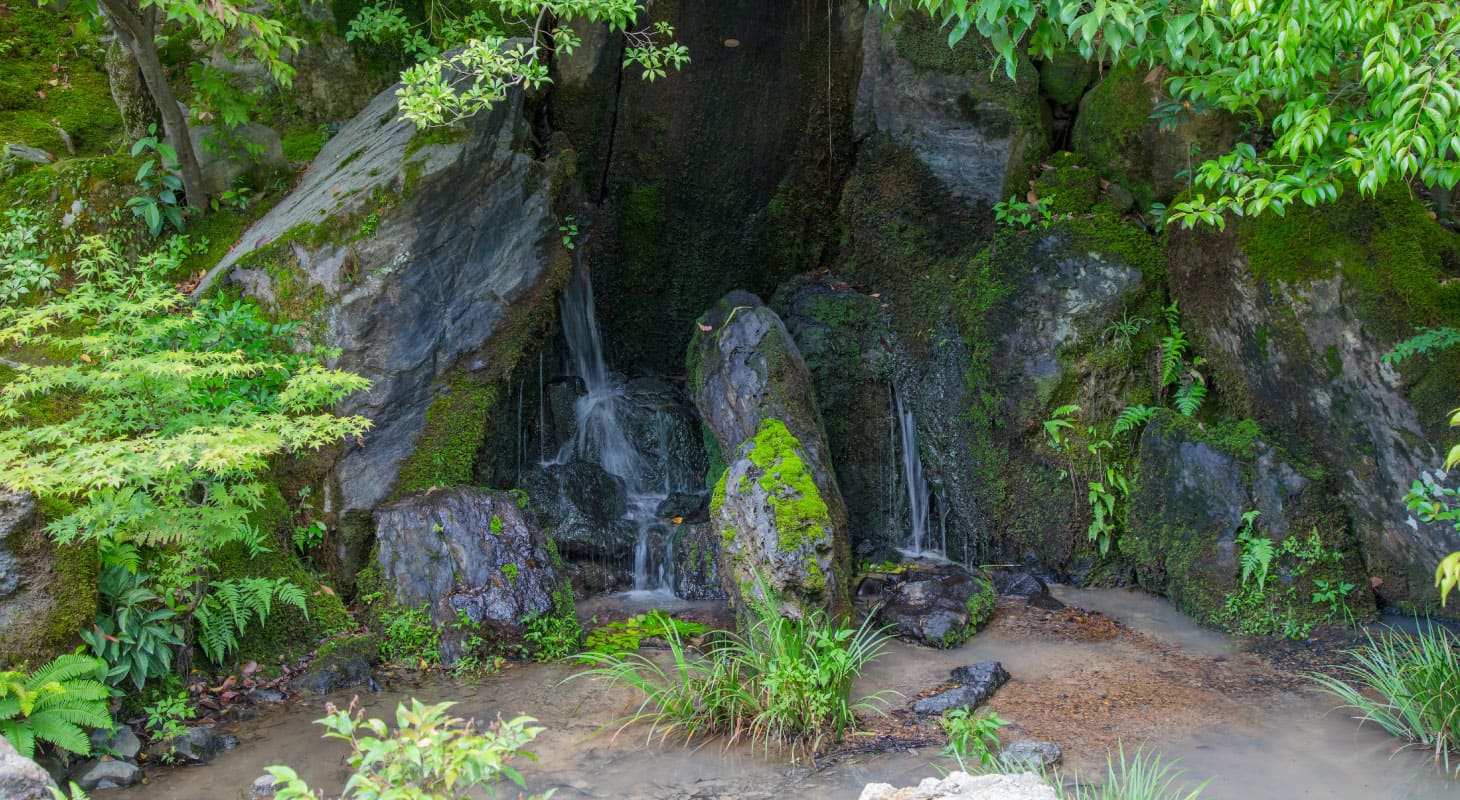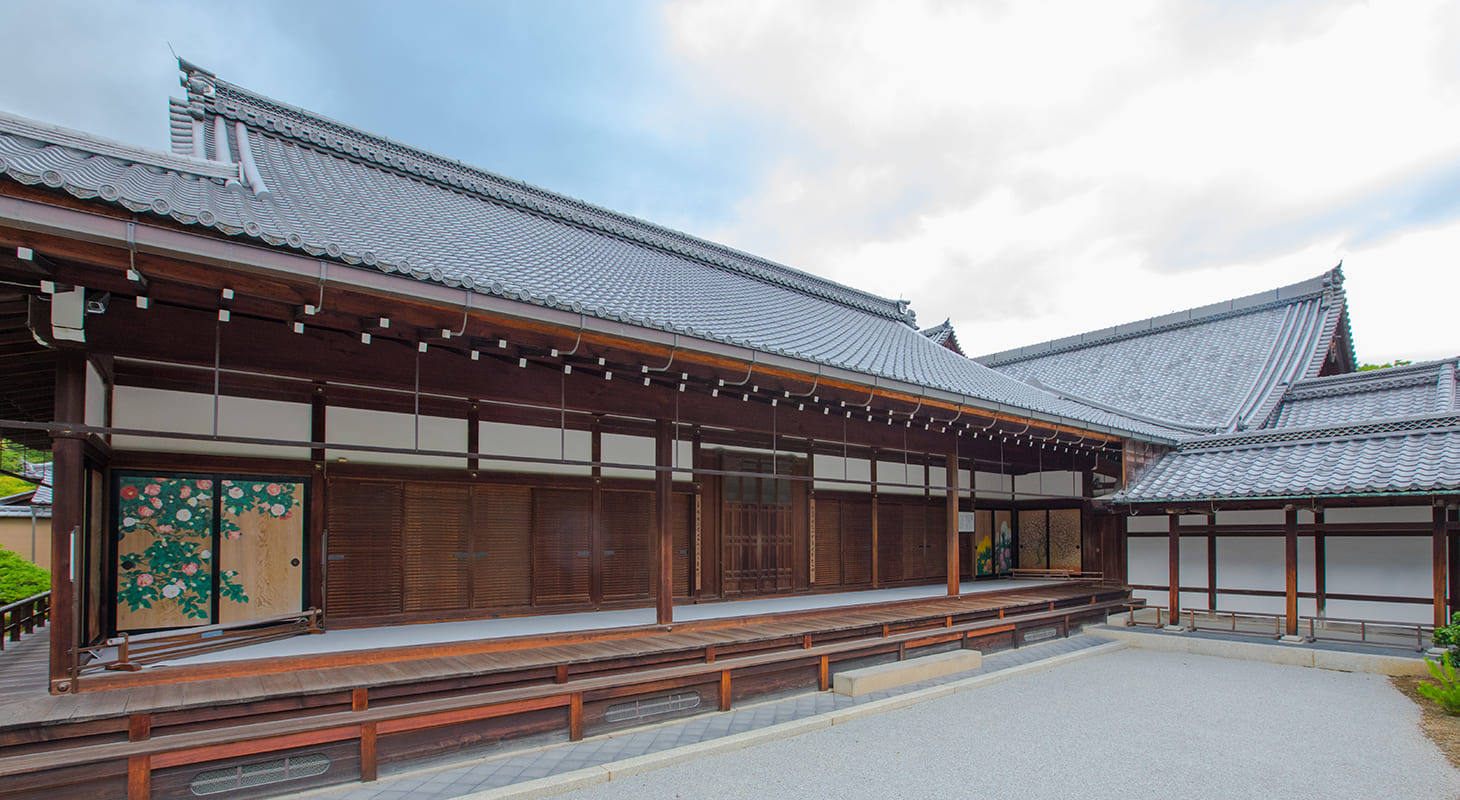ABOUT
Pure Land Paradise drawn by Ashikaga Yoshimitsu.
Its famous Golden Pavilion (Kinkaku)—actually a pagoda made to house the sacred relics of the Buddha—has given this temple the popular name of Kinkaku-ji (“Temple of the Golden Pavilion”), however the official name of this branch temple of the Rinzai-sect Zen temple of Shokoku-ji is Rokuon-ji. The temple was designated as a UNESCO World Heritage Site in 1994.
During the Kamakura period (1185-1333), this land was the site of a villa of the aristocrat Saionji Kintsune, known as Kitayamadai. During the Muromachi period (1392-1573), however, it caught the attention of the third Ashikaga shogun Yoshimitsu (1358-1408), who took over the site from the Saionji family in order to build his own villa, which he called Kitayamadono. This complex, whose gardens and architecture focused around a central Golden Pavilion, was said to evoke paradise on earth and was the destination of such esteemed visitors as Emperor Gokomatsu (r. 1392-1412), father of the Zen priest Ikkyû. The estate also became the center of the so-called “Kitayama culture,” which was central in importing various aspects of Ming-dynasty Chinese culture into Japanese society, thanks to increased trade relations with Japan’s continental neighbor.
After Yoshimitsu’s death, the villa was turned into a temple according to his will, with Musô Sôseki (also known as Musô Kokushi, 1275-1351) becoming its first abbot. The name Rokuon-ji was taken from the first two characters of Yoshimitsu’s posthumous name.




